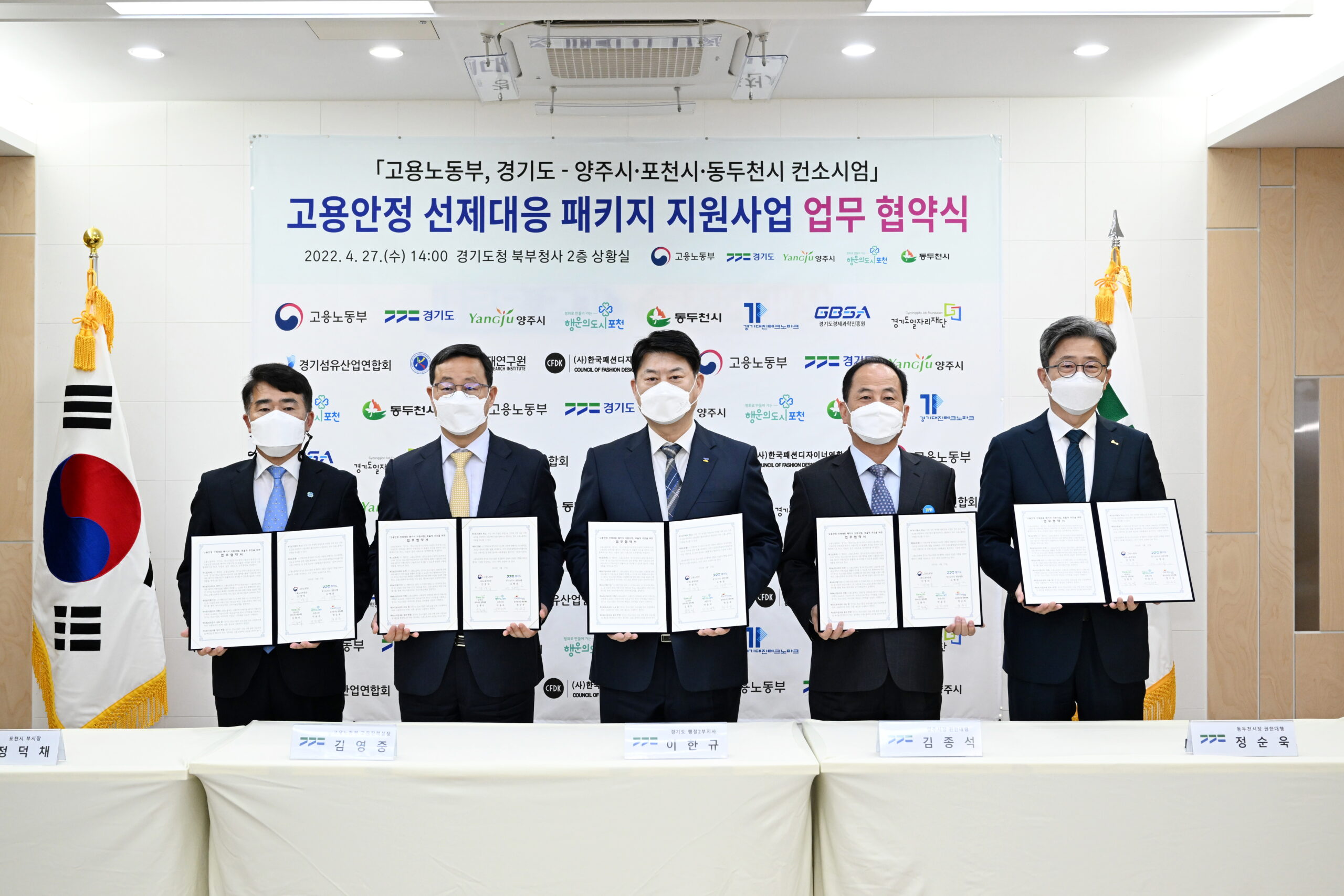[동아시아포럼] 호주의 미래를 위한 이민정책 개혁
이민정책 개혁, "노동착취, 이민 인구, 유학생 비자에 대한 중요한 정책 검토 거쳐" 사회적 통합은 균형 잡기의 문제, 이민 증가 속도와 사회적 신뢰 간의 비율을 맞춰야 성공적인 개혁을 위해 효과 분석과 다양한 요인 고려 필수, 절충과 설득의 연속
[동아시아포럼]은 EAST ASIA FORUM에서 전하는 동아시아 정책 동향을 담았습니다. EAST ASIA FORUM은 오스트레일리아 국립대학교(Australia National University) 크로퍼드 공공정책대학(Crawford School of Public Policy) 산하의 공공정책과 관련된 정치, 경제, 비즈니스, 법률, 안보, 국제관계에 대한 연구·분석 플랫폼입니다. 저희 폴리시코리아(The Policy Korea)와 영어 원문 공개 조건으로 콘텐츠 제휴가 진행 중입니다.
호주는 민주주의 국가 가운데 인구 대비 이민자 비율이 가장 높은 나라 중 하나다. 또한 숙련공, 망명 및 통합 정책에서 종종 모범이 되는 국가기도 하다. 이민정책 개혁과 관련해 호주에서 일어나는 일은 주요국에도 상당한 영향을 미친다.

이민자 수 통제, 한정된 자원을 둘러싼 사회적 긴장 고조
지난 11일(현지 시각) 호주의 클레어 오닐 내무부 장관과 앤드류 자일스 이민부 장관은 기자회견을 열고 10개년 이민정책 전략을 발표했다. 이날 기자회견에서는 호주 정부는 이민자 수를 다시 통제하고 연간 이민자 수를 약 50% 줄일 것이라고 전했다. 이러한 결정의 배경에는 저임금 국가의 유학생 비자 남용을 저지하고 숙련된 기술을 보유한 이민자의 유입 통로를 개선해 이민자 노동착취 환경을 근절시킬 목적이 포함돼 있다. 호주 정부에 따르면 올해 6월까지 1년간 집계된 호주 이민자 수는 51만 명이다.
이런 가운데 지난 3월 발표된 ‘호주의 미래를 위한 이민제도(이하 파킨슨 리뷰)’가 호주 내에서 재조명되고 있다. 파킨슨 리뷰는 호주의 이민정책 개혁을 위한 정책적 검토를 담고 있는 문서로 이민 프로그램을 수립할 때 정부가 고려해야 할 절충점과 도전과제가 제시돼 있다. 호주의 고위행정관료 출신의 마틴 파킨슨이 이끈 호주이민리뷰위원회의 해당 보고서는 발표됐을 당시 의견이 분분했다.
파킨슨 리뷰는 먼저 이민자 증가세와 사회적 신뢰 사이의 균형을 맞춰야 한다고 강조했다. 이민자 증가로 인해 일자리 경쟁이 과열되거나, 제한된 자원을 둘러싼 갈등이 발생할 경우, 반이민 감정이 고조되는 경향이 있기 때문이다. 이민 규모가 호주의 실업률에 영향을 미친다는 명확한 증거는 없지만, 노동시장 유입을 통제하고 불평등을 최소화하는 것이 향후 이민 프로그램에 대한 국민들의 지지를 보장하기 위한 핵심이라는 것이다. 이를 증명하듯 호주의 이민제도에 대한 신뢰도는 코로나19로 국경 폐쇄가 장기화되면서 이민자 수용이 제2차 세계대전 이후 최저치를 기록했던 2021년에 가장 높았다.
이민 제도가 여론에 따라 움직여선 안 된다는 반박도 있으나, 이민 규모가 급격하게 늘어날 경우 정부의 통제 가능 수준을 벗어나게 된다는 것이 파킨슨 리뷰의 골자다. 이민 규모의 확대는 주택 부족 문제와 공공 인프라의 부담을 야기하고 이는 주민들의 삶의 질에 직접적인 타격을 준다는 것이다. 실제로 팬데믹 이후 이민자들이 증가하자 호주의 인구증가율이 가파르게 상승했는데, 늘어난 인구를 수용할 주택이 부족해진 데다 대중교통 등 각종 편의를 위한 인프라, 특히 도로망 확충 등도 인구 증가 속도를 따라가지 못했다. 그 결과 이민자와 기존 주민들 간의 사회적 긴장이 고조됐고 이민 제도에 대한 신뢰 역시 추락했다. 호주와 같은 다문화 사회에서도 해외 순 이민자의 급격한 증가는 이민에 대한 사회적 신뢰마저 훼손할 수 있음을 시사하는 대목이다.
노동시장의 공급 부족·불균형 및 노동착취 문제에 적극 대응
파킨슨 리뷰는 호주 정부의 ‘태평양 호주 노동 이동성(PALM) 비자’ 정책을 꼬집기도 했다. PALM 제도가 저숙련 근로자를 대상으로 비자를 발급하기 때문에 저임금 문제가 심화했다는 지적이다. 앞서 호주 정부는 농업 및 농업 관련 식품 제조 부문의 노동 공급 불균형을 바로잡기 위해 PALM 비자 제도를 마련한 바 있다. 이를 통해 호주 기업들은 태평양 9개국과 동티모르 출신의 이민자를 고용할 수 있다. 그러나 파킨슨 리뷰는 PALM 제도로 인해 개혁 정책 핵심 중 하나인 이민자들의 노동착취 문제를 해결할 수 있을지조차도 불분명하다고 비판했다.
그러면서 노동착취 중단을 위해 유학생 비자 정책을 개혁해야 한다고 역설했다. 앞서 호주 정부는 임시 기술이민 소득 기준을 기존 5만3,900호주달러(약 4,759만원)에서 7만 호주달러(약 6,181만원)로 상향 조정했다. 저임금 이민자가 고임금 이민자보다 노동착취를 경험할 가능성이 높다는 이유에서다. 아울러 전반적인 노동착취 문제를 완화하기 위해 임시 비자 소지자의 유동성을 높이기도 했다. 즉 취업 비자가 한 명의 고용주와 연결되지 않고, 전체 부문에서 일자리를 구할 수 있도록 이동성을 제고한 것이다. 고용주의 ‘절대적’ 권한을 줄여 이민 노동자들이 악덕 사업장에 고립되는 일을 근절하겠다는 복안이었다.
이에 파킨슨 리뷰는 “정부는 소수의 ‘우수한’ 유학생에게만 영주권을 보장하거나 임시 졸업 비자(subclass 485)의 최대 체류 기간을 단축할 것을 권고하고 있는데, 일부 교육기관이 비자 공장으로 전락하면서 저임금 노동자를 양산해 노동력 착취의 빌미를 제공하고 있다”고 지적했다. 호주의 노동통계 자료에 따르면 유학생들의 직장이 그들의 교육 수준에 상응하지 않는 것으로 조사됐고, 현지 졸업생과의 임금 소득 격차도 커지고 있다는 점을 근거로 들었다.
이민 정책 개혁의 참여와 협력, 다층적 검토로 지속 가능한 이민정책 수립
파킨슨 리뷰는 이어 이민 제도 관계자들을 논의에 참여시킴으로써 효과적인 이민 프로그램을 구성해야 한다고 제언했다. 기존 프로그램의 경우 핵심 구성원이 빠져 있어 불공정하고 비효율적인 결과를 초래했다는 설명이다. 그러면서 숙련 근로자 이민에 관한 장관급 자문위원회(Ministerial Advisory Council on Skilled Migration)가 ‘삼자 간 관리 체제(tripartite management)’로 운영되고 있는 점을 제시했다. 삼자 간 운영 관리의 장점으로는 △산업계·노동조합·정부 대표가 노동시장의 인력 부족 문제에 대해 함께 의견을 개진할 수 있다는 점 △이해관계자들의 동의를 촉진하고 장기적으로 지속 가능한 이주 환경을 조성할 수 있다는 점 등이 꼽힌다.
어떤 개혁이든 그 근저에는 고등교육, 노동시장, 재정 상황 등 다른 여러 부문과 겹치는 복잡한 이민 제도에서 효과적인 정책을 수립해야 한다는 어려움이 있다. 더욱이 이민정책은 종종 예상치 못한 결과로 이어지는 경우가 많다. 그런 만큼 신중한 프로그램 설계와 경험적 데이터의 적극적 활용이 이번 이민정책 개혁의 최우선 핵심 과제로 사료된다.
원문의 저자는 호주 시드니대학교(The University of Sydney) 국제관계행정학과장이자 공공정책 및 비교정치학 부교수로 재직 중인 안나 바우처(Anna Boucher)입니다.

Imagining a migration system for Australia’s future
As a percentage of its population, Australia has one of the highest rates of immigration in the democratic world. It is also a country that is frequently emulated in terms of its skilled, asylum and integration policies. What happens in Australia with regards to immigration policy reform has implications for many other nations.

Immigration policy reform in Australia in recent years has seen seminal policy reviews into the exploitation of migrants, Australia’s net overseas migration and the nature of international student migration. Published in March 2023, the Migration System for Australia’s Future report (known as the Parkinson Review) is a product of these reviews and policy debates.
When the Parkinson Review was published in March 2023, it was met with differing reactions. This landmark policy statement outlines a series of trade-offs and challenges that the government will have to reckon with in formulating Australia’s immigration program over future decades. Appropriate responses to these trade-offs will require a careful balancing of competing factors.
The first challenge will be to balance immigration growth and social trust. Evidence from Australia and overseas shows that immigration systems are most likely to be accepted by society when they are well managed. When there are concerns about increased immigration and competition with the domestic population, or where conflict emerges over scarce resources, anti-immigrant sentiment tends to increase.
The Review reveals that trust in Australia’s immigration system was at its highest in 2021, when immigration was at its lowest since World War II due to protracted COVID-19 border closures. Sharp and unanticipated increases in net overseas migration, even in multicultural societies like Australia, can hamper social trust in immigration.
This does not mean that immigration programs should be driven by popular opinion, but does highlight that immigration is likely to become more politically challenging for governments when it reaches a certain level. This is especially the case if there are perceived negative externalities such as labour market exploitation or a strain on housing availability or other infrastructure.
While there is limited economic evidence that the scale of immigration into Australia affects domestic unemployment, a core argument of the Review is that minimising inequality in the labour market and upholding the principle of a ‘fair go’ are key to ensuring support for future immigration programs.
The Review identifies some areas for reform that the government has already or is currently implementing, such as tripartite management and visa mobility. Under tripartite management, representatives from industry, unions and government will be able to make recommendations and provide input on labour market gaps. Greater mobility for temporary visas holders will allow them to seek employment across a whole sector rather than their visa being linked to one single employer, which will put them at less risk of exploitation.
The Temporary Skilled Migration Income Threshold was also raised from AU$53,900 (US$35,400) to AU$70,000 (US$46,000). This is consistent with evidence that lower paid migrants are more likely to experience labour exploitation than those in higher salary brackets.
Extending the Pacific Island Mobility (PALM) visa could provide more opportunities for low and semi-skilled workers to enter Australia. But the PALM visa has also been the subject of underpayment concerns and so it is unclear whether entry through this visa would solve some of the exploitation issues that bedevilled the skilled migration visa.
Other changes proposed in the Review, such as reframing the subclass 485 Temporary Graduate visa to service a small number of in-demand areas or high calibre graduates, could see significant reductions in international student flows. But any such reduction is likely to see pushback from the higher education sector among other affected groups. It is perhaps on this basis that the proposed changes (if any) to the Temporary Graduate visa have not yet been announced by government.
The Review found that the labour market outcomes of many international graduates has declined and are not commensurate with their levels of tertiary training. This has left large numbers of Temporary Graduate visa holders with low salaries and created a growing income gap between them and domestic graduates. The Review recommends either guaranteeing that a small number of high-quality international students will gain permanent residency or shortening the maximum duration of Temporary Graduate visas, both of which are likely to see reductions in the overall number of international students with post-study work rights.
Given that these rights are an attractive element of Australia’s international student model, any reduction in such rights could have flow-on effects for the higher education sector as a whole. Achieving the correct balance between better regulation of the immigration system and protecting a critical dimension of Australia’s higher education will be another key challenge in reforming immigration policy.
Underpinning any reform will be the challenge of creating effective policy in a complex immigration system that overlaps with various other sectors, such as higher education, the labour market and even Australia’s fiscal settings.
Any immigration system design must contend with the independent decision-making of millions of potential migrants. Oftentimes immigration policies do not have the scale of effect that is intended or even the desired impact due to the unanticipated consequences of policy design. The potential externalities of any immigration policy will need to be part of the government’s calculus. Careful program design and reliance on empirical data will be a core aspect of this reform agenda to ensure that policy responses are as targeted as possible.
Immigration carries both foreign relations and foreign development implications and as such is a central pillar for protecting Australia’s ties to the region. Strengthening relationships with Pacific nations through visa schemes could carry clear development benefits and elevate Australia’s international standing more broadly.



























